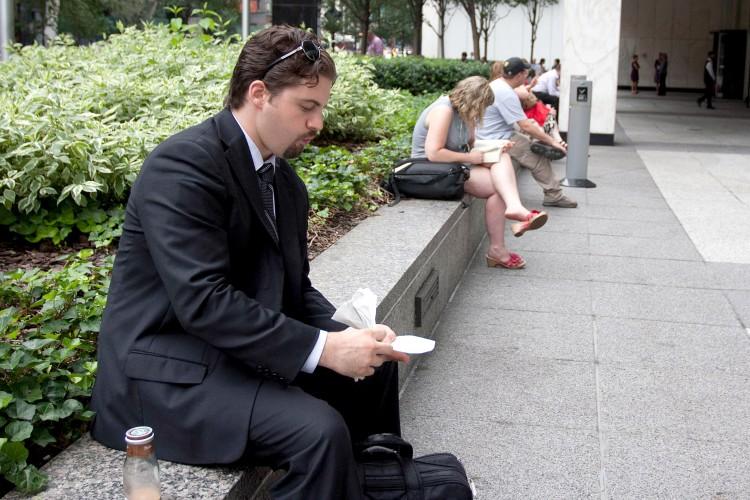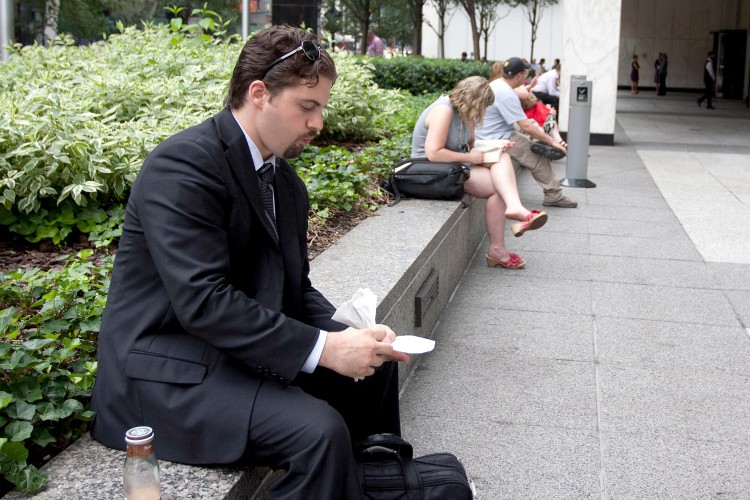Maintaining Public Parks With Private Funds
The New York City Department of Parks and Recreation relies heavily on public-private partnerships to maintain the city’s green space. Some say it’s a boon as budget cuts sweep city; some say it opens the door to the commercialization of what was once pristine parkland.

A PLACE TO REST: One Penn Plaza at 34th Street and Eighth Avenue is a privately owned public space. Local employees and pedestrians stop for a rest at lunch hour. Tara MacIsaac/The Epoch Times
|Updated:






